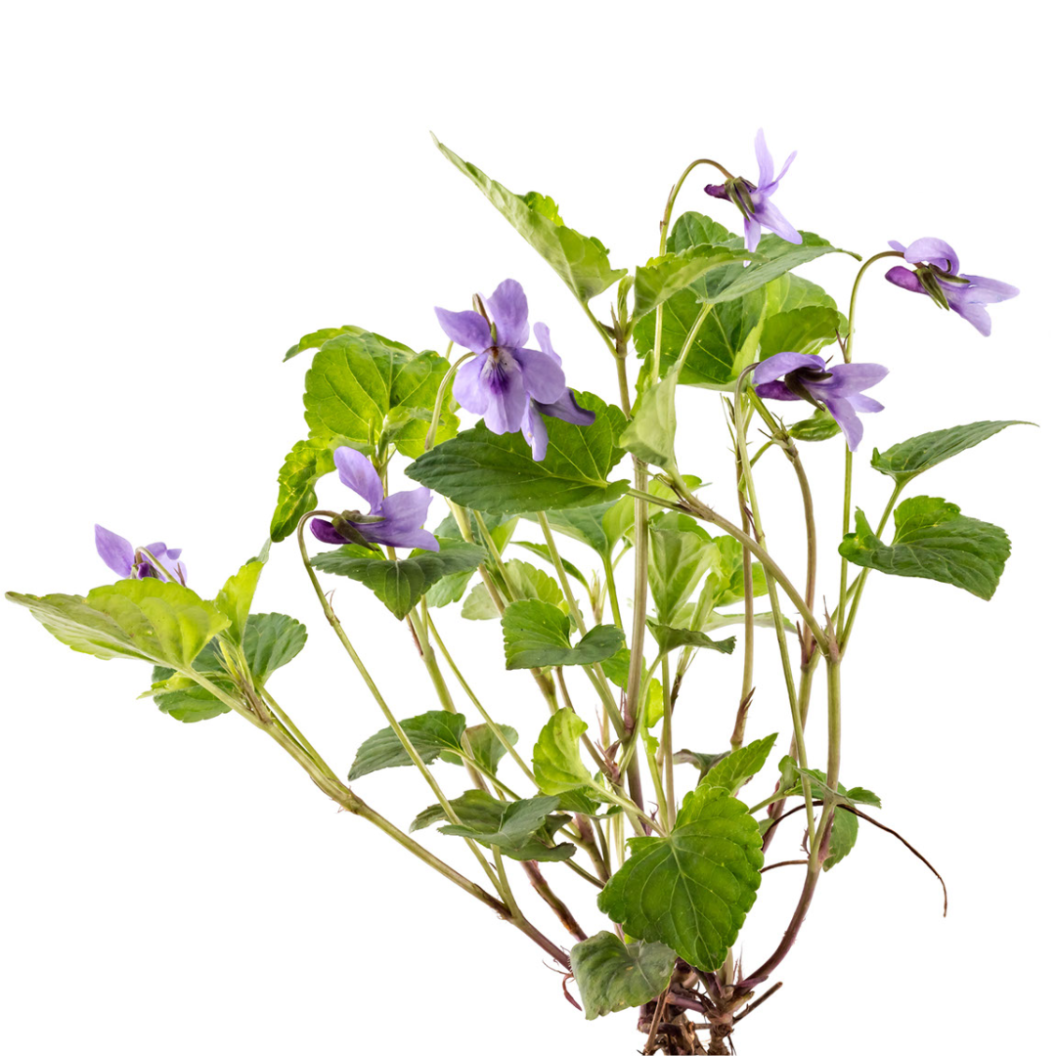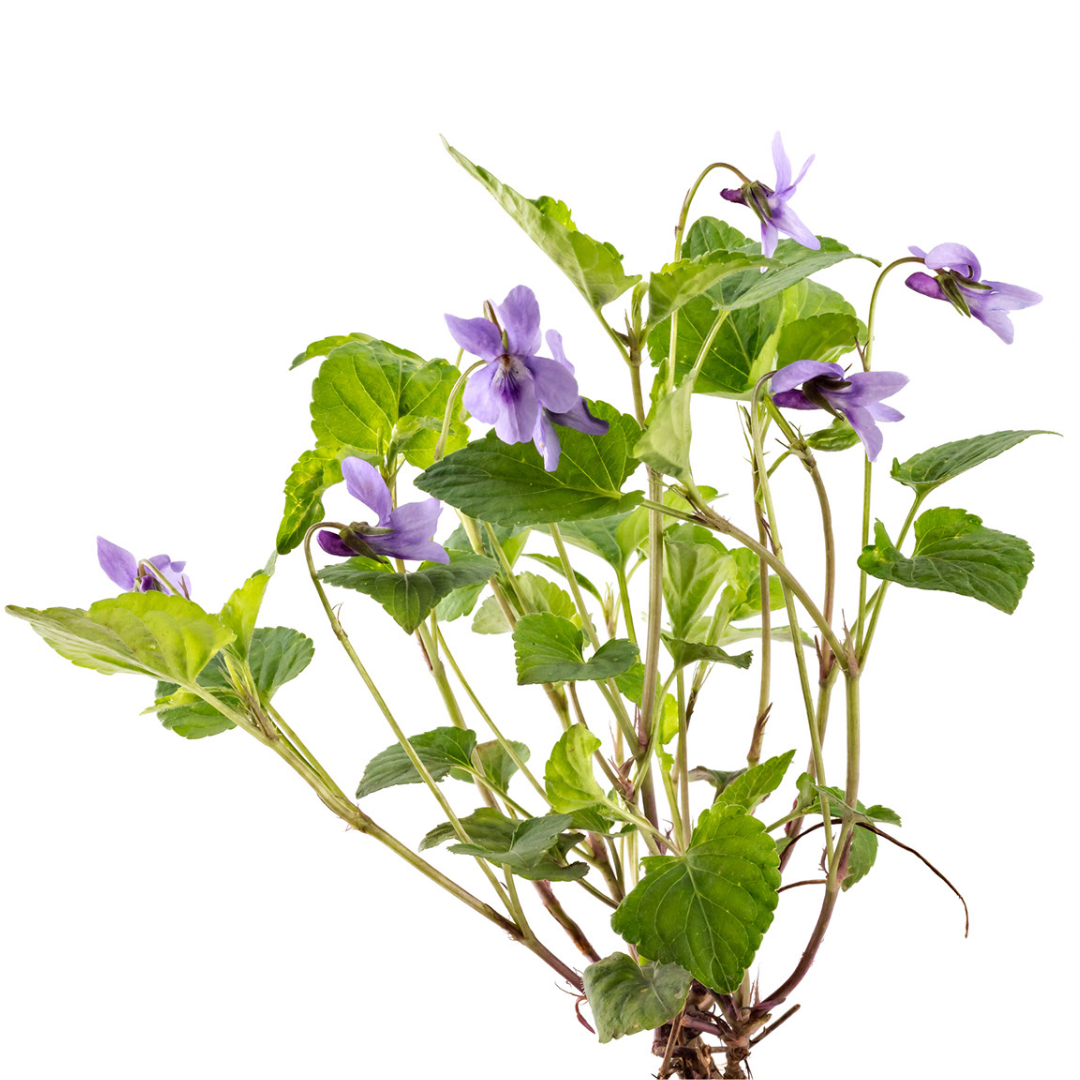
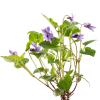
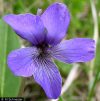


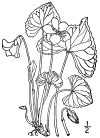
Wild Violet
DESCRIPTION: Wild violet is a plant that you might find growing in a forest or on the edge of a field. It has pretty heart-shaped leaves that look like they belong in a fairy tale. The flowers are a lovely purple or blue-violet color, and they might remind you of pansies or other similar flowers. Wild violets are popular in gardens because they're easy to take care of and they add a pop of color. Overall, they're a sweet and charming plant that adds a touch of whimsy to any outdoor space. Some people consider wild violet to be a weed because it can grow very easily and quickly, even in areas where it's not wanted. Its ability to spread and establish itself in lawns, gardens, and other areas can make it difficult to control and can sometimes crowd out other plants that people may prefer to have in those spaces. Additionally, wild violets can be difficult to remove completely, as they have deep roots and can re-grow from small pieces of the root system.
SCIENTIFIC NAME: Viola sororia
OTHER NAMES: Common Blue Violet, Wood Violet, Hooded Blue Violet, Purple Violet, Woolly Blue Violet, Confederate Violet, Dooryard Violet
LEAF TYPE: Broadleaf
FLOWERS: Wild violet flowers are delicate and pretty. They typically have five petals, which are a soft purple or blue-violet color, and they have a small yellow center. The petals of the flowers are rounded and overlap slightly, giving them a sort of "frilly" appearance. The flowers grow on thin stems that emerge from the base of the plant and they tend to bloom in early spring or early summer, depending on the climate.
LEAVES: The leaves of wild violet are heart-shaped and somewhat rounded, with a slightly wavy or scalloped edge. They have a soft, smooth texture and are typically a medium to dark green color, although some variations may have slightly lighter or darker leaves. The leaves are usually not very large, and they grow on individual stems that emerge from the ground.
LIFE CYCLE: Annual & Perennial
HOW TO IDENTIFY: Identifying wild violet is relatively easy if you know what to look for. The plant is relatively small and low-growing, with heart-shaped leaves that are slightly wavy around the edges. The leaves grow on individual stems that emerge from the ground, and they're a medium to dark green color. Wild violet produces pretty purple or blue-violet flowers with five rounded petals that overlap slightly. The flowers grow on thin stems that emerge from the base of the plant. The plant itself spreads out over the ground, and it can form dense patches if left to grow unchecked. So, if you see a small plant with heart-shaped leaves, purple or blue-violet flowers, and a spreading growth pattern, there's a good chance that it's wild violet.
MECHANICAL CONTROL RECOMMENDATIONS:
1. Hand pulling - More Info
2. Mowing - More Info
3. Digging - More Info
4. Aeration - More Info
5. Landscape Fabric - More Info
6. Repeated Cultivation - More Info
7. Using a Sod Cutter - More Info
8. Boiling Water - More Info
CHEMISTRY RECOMMENDATIONS:
"Pre-emergent herbicides:
Prodiamine: This is a commonly used pre-emergent herbicide that provides effective control of a wide range of weeds, including Viola sororia. It's usually applied in early spring before the violets germinate.
Dithiopyr: Dithiopyr is another pre-emergent herbicide that can be effective against Viola sororia. It has both pre-emergent and early post-emergent activity.
Isoxaben: Isoxaben is a pre-emergent herbicide that works by preventing cell wall formation in germinating seeds. It can be effective against Viola sororia if applied before their seeds start to germinate.
Oryzalin: Oryzalin is a pre-emergent herbicide that can be used to control Viola sororia. It's important to apply it before the violets begin germinating.
Pendimethalin: This herbicide is effective against a variety of annual grasses and broadleaf weeds, including Viola sororia. It's usually applied in early spring.
Benefin: Benefin is a pre-emergent herbicide that can provide control over Viola sororia if applied before the seeds germinate.
Post-emergent herbicides:
Triclopyr: Triclopyr is a selective herbicide that targets broadleaf weeds and is often effective against violets. It's important to follow the product instructions carefully to avoid damaging desirable plants.
2,4-D: This is a commonly used post-emergent herbicide for broadleaf weed control, including violets. It's important to use it as directed and avoid overspray on desirable plants.
Dicamba: Dicamba is another selective herbicide that targets broadleaf weeds. It can be effective against violets, but caution is needed to prevent drift and damage to nearby plants.
Metsulfuron-methyl: This herbicide is often used for more challenging weed species, including violets. It's important to follow label instructions carefully to avoid harming desirable plants.
Clopyralid: Clopyralid is a post-emergent herbicide that targets broadleaf weeds and can be effective against violets. Use it according to the label instructions to prevent damage to non-target plants.
Quinclorac: Quinclorac is a herbicide that targets both broadleaf weeds and some grasses. It may provide control over violets in certain situations.
Glyphosate: Glyphosate is a non-selective herbicide that can kill a wide range of plants, including violets. However, caution is needed as it will harm any plants it comes in contact with, including desirable ones.
Selective herbicides:
Triclopyr: Triclopyr is often effective against violets and other broadleaf weeds. It can be used in lawns without harming most grasses. Always read and follow label instructions to avoid damaging desirable plants.
2,4-D: 2,4-D is a common broadleaf herbicide used in lawns. It targets many broadleaf weeds, including violets, while leaving most grasses unharmed. Careful application is essential to prevent damage to non-target plants.
Metsulfuron-methyl: This herbicide can provide effective control over violets and other broadleaf weeds in lawns. Use it according to label instructions to avoid damaging desirable plants.
Clopyralid: Clopyralid is another selective herbicide that targets broadleaf weeds, including violets. It's often used in turf and has minimal impact on grasses when used as directed.
Dicamba: Dicamba is a broadleaf herbicide that can be used selectively in lawns to control violets and similar weeds. Proper application is crucial to prevent off-target damage.
Quinclorac: Quinclorac targets both broadleaf weeds and some grasses. It can provide control over violets in lawns without harming most grass species.
Atrazine: Atrazine is a selective herbicide often used in warm-season grass lawns. It can help control violets and other broadleaf weeds while sparing desirable grasses.
Fluroxypyr: Fluroxypyr is a selective herbicide that targets many broadleaf weeds, including violets. It's often used in lawns and pasture settings.
Non-Selective herbicides:
Glyphosate: Glyphosate is one of the most widely used non-selective herbicides. It effectively kills most plants it comes into contact with, including violets. It's commonly used for spot treatment or in areas where you want to completely clear vegetation. Be cautious, as it will kill all plants, including grasses and desirable plants.
Glufosinate: Glufosinate is another non-selective herbicide that can effectively control violets. Like glyphosate, it will kill both weeds and desirable plants. Use it with care to avoid harming non-target vegetation.
Diquat: Diquat is a fast-acting non-selective herbicide that can be used for quick spot treatments. It can help control violets, but it's not a systemic herbicide, so it primarily affects the parts of the plant it directly contacts.
Pelargonic Acid: Also known as ""horticultural vinegar"" or ""weed vinegar,"" pelargonic acid-based herbicides can provide non-selective control over violets and other weeds. They are contact herbicides and work by drying out the plant's foliage.
Sodium Chlorate: Sodium chlorate is a powerful non-selective herbicide that can be used to kill violets and other vegetation. It's typically used for vegetation control in non-crop areas.
Recommended Prevention
Recommended Control

